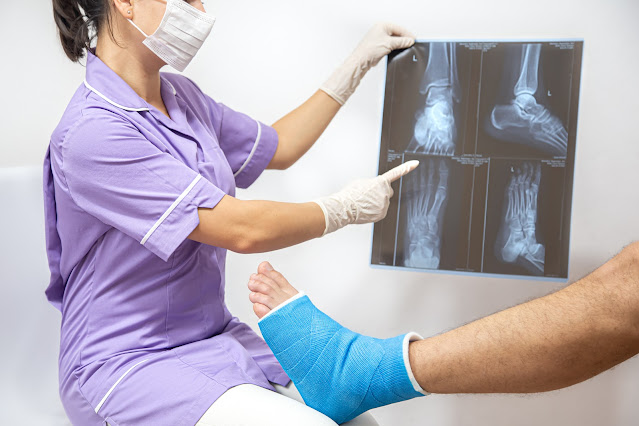What is a bone fracture?
The term "bone fracture" is the term used in medicine to describe a situation where the bone's continuity is broken. It is the same as a fractured bone.
The majority of fractures are caused by abrupt high force, pressure or impact on the bone.
Certain fractures may be caused by medical conditions that weaken bone. Examples include osteoporosis, certain cancers, and osteogenesis imperfecta (brittle bone disease).
A bone fracture that is caused by a medical issue is referred to as a pathological fracture.
 |
Facts of Fracture
- Most fractures are the result of accidents and falls.
- A compound fracture can also cause damage to the skin overlying it.
- There are a variety of fractures. These include Avulsion, Comminuted, Stress and hairline fractures.
- Bone healing is an organic process. Treatment (plasters and casts, surgical procedures and others) involves providing the bone with the best conditions for healing itself.
Fractures can develop in any bone within the
body and the term "break" is commonly used.
In the world of doctors, particularly
osteopaths, such as orthopedic surgeons "break" is a relatively rare
word when it comes to bones.
A fracture (not just a fracture) within the bone
can also be referred to as a fracture. Fractures can be found anywhere in the
body.
There are a variety of ways that bones can break
For instance, fractures to bones which does not cause harm to the tissues
around it or tear the skin is termed an open fracture.
However, those that cause damage to the skin and
penetrates into the skin is called a compound fracture, also known as open
fracture. Compound fractures tend to be more dangerous than fractures that are
simple since they can be contaminated and be infected. They can also result
from more injury.
Human bones are generally surprisingly sturdy
and can be able to withstand fairly powerful impact or force. But, if the force
is too strong, or there's something wrong with the bones' structure, then it
may crack or break.
As we age the more force our bones can take.
Because the bones of children are more flexible and supple, when they do suffer
fractures, they tend to be different from adult fractures. Also, children have growth plates on the
edges of their bones – regions of bone growth that can be damaged.
Symptoms of Bone Fractures
The symptoms of a fractured bone will vary greatly based on the region affected and the severity.
The symptoms and signs of a fracture differ
depending on the type of bone affected by the fracture, the patient's age, and
general health, as depending on the degree and severity. But, most often, they
comprise the following symptoms:
- Pain
- swelling
- bruising
- skin discoloration around the affected region
- The affected area could bend at an odd angle
- The patient is not able to apply weight to the damaged region
- The patient is unable to move the affected area.
- The joint or bone affected can feel painful or grating.
- If it's an open break, it might be bleeding
If you are able, do not take a patient who has a
fractured bone until an orthopedic surgeon in Vadodara is available to evaluate the condition and, when necessary apply a
surgical splint.
Causes of Bone Fractures
Most fractures are caused by an accident or unfortunate
fall. Healthy bones are strong and resilient and can withstand tremendous
damage. Two factors increase the risk of fractures as we age: bones become
weaker and there is a greater chance of them falling. Children are more likely
to break than adults, as they are often more active than adults.
Patients who have chronic conditions that can
weaken their bones are at greater risk of breaking. This could include
osteoporosis, infection, or the presence or occurrence of a tumor. This type of
fracture, also known as osteoporotic fracture, is what I have already
mentioned. These fractures are most common in professional athletes. Contact the best orthopedic
hospital in Baroda for bone fracture
treatment.



Comments
Post a Comment